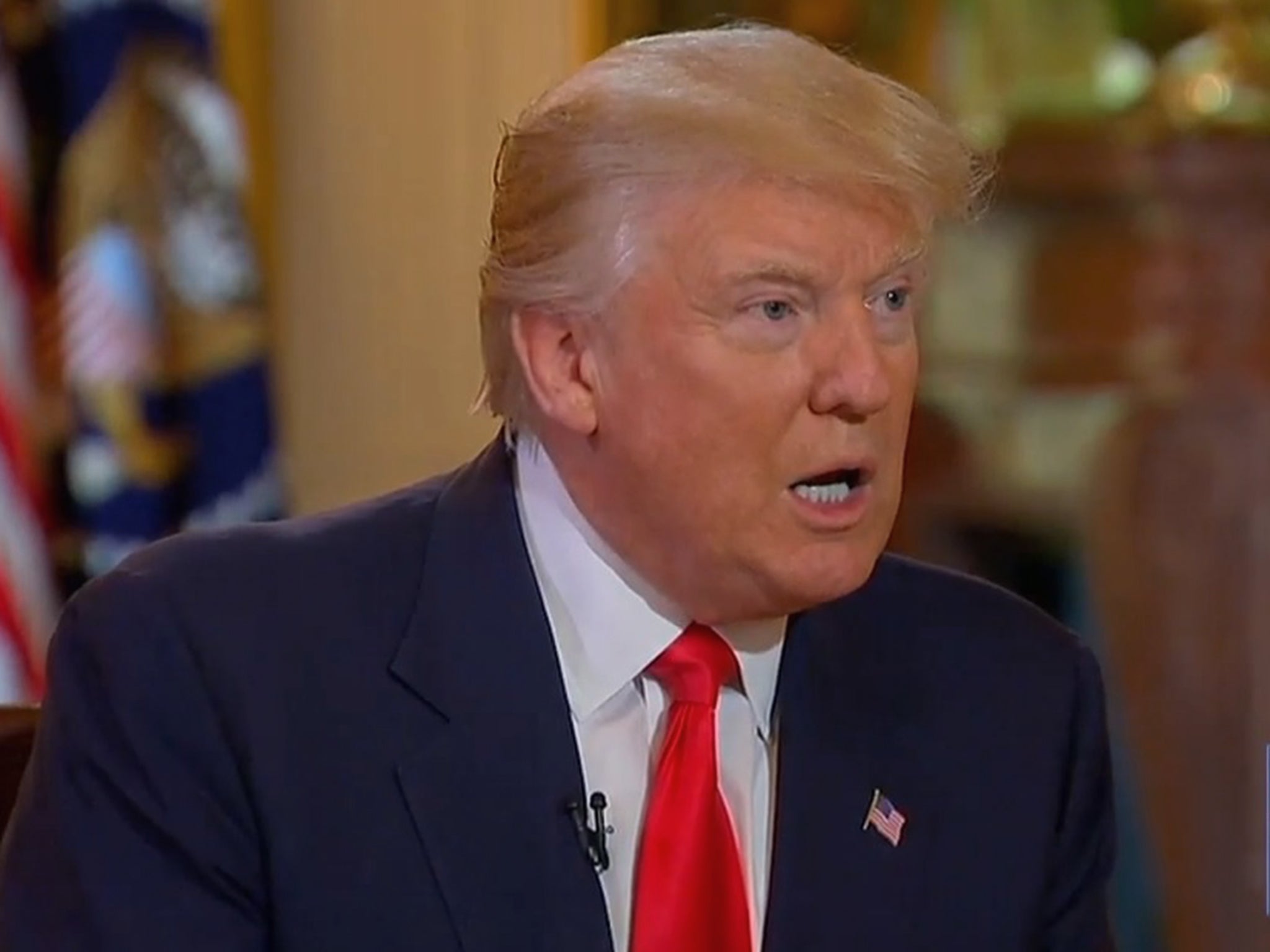Donald Trump wants to splurge $54bn more on the US military – but how will he pay for it?
The US President has promised Medicare and Social Security will not be touched. But even wiping out the entire budgets of the Environmental Protection Agency and that of the State Department would not cover the increase

Donald Trump has made waves with the announcement from his officials that he wants to crank up US military spending by $54bn (£43bn).
But how significant is this sum? And how will it be paid for?
How big is this commitment?
The US Department of Defence’s official budget in 2016 was $526bn. So an extra $54bn would represent roughly a 10 per cent increase.
But some say that the White House is playing games.
Officials have also said that the Pentagon’s Budget will rise to $603bn.
Including “overseas contingency operations” – a separate pot of money available to the Pentagon – the total 2016 budget was actually £585bn.
If the $603bn is on top of this the increase would be just 3 per cent higher, barely higher than the rate of inflation in the US economy.
John McCain, the Republican chairman of the Senate Armed Services Committee, said Trump’s spending plan was insufficient and would, in fact, leave the US military “underfunded, undersized, and unready to confront threats to our national security”.
But the US is the biggest spender on defence in the world, isn’t it?
Yes. According to calculations by the Stockholm International Peace Research Institute the US spent more than twice the amount as the second largest spender China in 2015 ($596bn versus $215bn).
The UK was in fifth place with spending of $55.5bn.
As a share of its GDP the US spent 3.3 per cent on defence, also higher than China’s 1.9 per cent.
The UK spent 2 per cent.
However, Saudi Arabia spent 13.7 per cent of GDP and Russia 5.4 per cent on their militaries.
The share of US military spending has also been falling since 2010, when it peaked at 4.7 per cent of GDP.
How will the extra spending be paid for?
Trump has indicated it will not come out of Social Security (pensions) or Medicare (old-age public health care).
Military veterans' benefits and law enforcement are also reported to be untouchable.
So that leaves education, the environment, science and poverty reduction.
This implies potentially colossal cuts to those remaining areas of public expenditure.
The Environmental Protection Agency’s entire budget is only $8bn and there are suggestions it could be slashed by 25 per cent.
Even wiping out the entire EPA budget and also that of the State Department would not cover the increase.
Presented with this fact in an interview with Fox News on Tuesday, Donald Trump seemed to suggest that much stronger growth from a “revved-up economy” would contribute to paying for the extra military outlay.
Yet economists are decidedly sceptical of the ability of the Trump administration's ability to raise US GDP growth to the 4 per cent level it is targeting.
Data released on Tuesday showed the US grew at an annual pace of 1.9 per cent in the final quarter of 2016.
Any other possibilities?
The other way that Trump could meet his spending goals without wiping out whole government departments would be to simply let US government borrowing increase.
Public borrowing was estimated to be 3.1 per cent of GDP in 2016.
The government could also raise taxes to pay for it. But Trump is promising the opposite, pledging big cuts in income tax and corporation tax.
Will the plan actually be delivered?
Trump’s proposed ring-fencing of Social Security and Medicare from cuts sets up a power struggle with Congress.
Republicans have long sought to make major savings from those so-called “entitlement” programmes.
And Trump needs the cooperation of Congress to deliver his budget.
Social security, health and government debt interest currently account for almost 60 per cent of federal spending – and the share is projected to rise to 80 per cent over the next decade as the US population ages.
Subscribe to Independent Premium to bookmark this article
Want to bookmark your favourite articles and stories to read or reference later? Start your Independent Premium subscription today.

Join our commenting forum
Join thought-provoking conversations, follow other Independent readers and see their replies